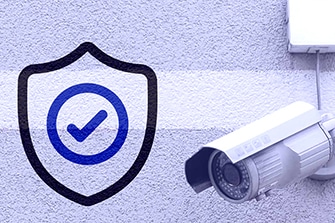Building a Better Records Management Strategy
August 17, 2021
How much sensitive information does your organization handle every day? If you do a bit of digging, the answer might surprise you. The truth is personal information is essential to running many businesses. Whether it’s customer financial data, employee records, patient data, or other forms of personal data, records containing private content are everywhere. This glut of personal and proprietary data creates a veritable sand trap of privacy and compliance concerns.
However, protecting private data is only one part of staying compliant. Compliance regulations for your industry may also dictate how you store information, who has access, what kinds of information you collect, or even how long you need to keep it (and what you need to do with it after the retention period has ended). Navigating the murky waters of records compliance isn’t easy or simple, but these five tips can get your team started on the right path.

Getting compliant is an ongoing process. You can’t just “set it and forget it” because compliance law is often going through small tweaks and changes. Some common barriers or challenges in creating a compliance strategy include:
- A company culture that doesn’t prioritize compliance
- Organizations that struggle to adapt to change
- The Challenge of building consumer trust
- Increasingly remote and geographically widespread workforce
- A greater dependence on digital technologies
- Rapid turnover of tech, people, and consumer habits
- Increasingly sophisticated malicious attacks on sensitive consumer data
You can learn more about specific compliance standards on our compliance page.
Know What You’ve Got
Review your assets and determine where they’re stored
The types of information you collect and the retention schedules for that content will be unique to your industry, but the first step to better compliance is knowing where you currently are in your journey. This means determining what types of records you have and finding out what format they’re in.
Some examples of Important Information might include:
- Customer Information or Profiles
- Employee Records
- HR Documentation
- Financial Data (Investments, Payroll, Banking Information)
- Tax Information
- Proprietary Processes, Products, or Patents
- Contracts or other Legal Documents
- Insurance Documents & Policy Information
- Blueprints & Facility Security Information
As you’re determining what you have, you will also be learning more about where it’s stored. In today’s world, a lot of this information may be digital, but records with long retention schedules may still be stored in a paper format. You may find a great first step is consolidating all of your records into a centrally accessible electronic content management (ECM) platform or a secure cloud environment. As you audit your records you may find them spread out across a wide range of locations such as:
- Private or Public Servers
- Cloud-based Storage Solutions (Such as Box, or Dropbox)
- Onsite or Offsite Storage Facilities
- Backup Hard Drives
- Networks
- Personal Devices
Centralize Access
Reduce Confusion and Redundancy with a Document Management Platform
After taking stock of your documents, you may find you have a variety of information silos. For example, you may determine that some essential policies or records remain in a paper format or notice that some content that requires collaboration is only accessible to a specific department. Centralizing access to your documents may require you to scan existing records or migrate your content to a secure cloud-based document management system. Although the initial hurdle of auditing and migrating your content can feel disruptive, ultimately it can help you realize the following benefits:
- Improved access for on-site and remote staff
- Managed access for sensitive content
- Version tracking to ensure everyone is accessing the most up to date information
- Superior collaboration between departments
- Disaster recovery and automated backups
Integrate Your Whole Business
Integrate your Systems as Much as Possible to Remove Information Silos
Centralizing access with an ECM is a vital step in improving document compliance and collaboration, but to take it to the next level you will want to work towards a more holistic approach across all of your systems. This means integrating your key systems to work together so that information can be passed back and forth. An ECM that doesn’t integrate with your Enterprise Resource Planning (ERP) system or your Customer Relationship Management (CRM) platform may create more problems for your team than it solves. Ensuring that every system is using the same information can improve compliance by:
- Reducing redundant information
- Ensuring your team has access to the latest versions of documents and policies
- Improving security by ensuring the connections between systems are secure and reducing the need for people to exchange information using less secure methods such as email
- Increasing document and data visibility across the whole organization
Automate & Streamline
Automate Auditing, Retention Schedules, & Workflows
Tracking and auditing document access will simplify records management and help you stay compliant. Having visibility into how your documents are handled and by whom is an essential part of building your greater compliance strategy. However, the method you use to track access can be a barrier or a benefit, depending on how it’s implemented.
Depending on employees to manually record document access or changes is tedious and prone to error. A better solution is to automatically track access and changes to your documents using an electronic content management (ECM) platform. In addition to allowing managed access, automatic reporting allows you to gather valuable data on which documents are being used and how. It also allows you to learn more about employee productivity and how collaborative your different departments are. Additionally, access isn’t the only part of records management you can automate with an ECM. You can also automate retention schedules, versioning, document workflows, metadata tagging, and more.
Invest in Training
Make People a Priority in Your Compliance Strategy
There is no question that automation and cloud-native software can make a huge impact on your records management. However, people remain the number one factor in an effective records compliance strategy. Ensure that your policies are clear, comprehensive, and readily available to your team. Additionally, take the time to actually train staff in how to handle documents and help them understand your compliance policies. You will want to maintain records such as attendance and training module completion as these may be required to meet your specific compliance guidelines.
Ultimately, the more invested everyone is in ensuring document compliance, the better your results. You can improve buy-in by defining stakeholders at your organization. Choose compliance officers who can help champion your policies so that people understand the “why” behind the rules. You should also periodic auditing of your documents to ensure employees are maintaining a compliant workflow so you can focus your efforts on areas that need improvement.
How can DOMA help you implement the Cloud in your business?
Compliance is a nuanced challenge that will require an approach that is tailored to your industry. As you choose the right tools to bolster your compliance strategy, you may want to consider both the short-term and long-term impact. For example, scanning paper documents is a quick first step that immediately delivers benefits by freeing up space and improving document access. However, you will need to continue to periodically scan to maintain the benefit, because scanning doesn’t address the fundamental challenges of maintaining paper documents. Transitioning to a new cloud-based content management system can be disruptive, but in the grand scheme, it can positively alter your document workflow and improve compliance for the years to come. The key is choosing a partner who can guide you through these decisions and offer the appropriate support and training. DOMA has the expertise you need to begin implementing both the quick fixes and the long-term solutions that will improve compliance at your organization.
About DOMA- Powered by Tech, Driven by People
DOMA Technologies (DOMA) is a software development and digital transformation company whose mission is to change customer lives by lightening their workload through faster and more targeted access to their data. Since 2000, our team of 200+ experts has helped businesses navigate all aspects of the digital world. We are a dedicated strategic partner for the federal government and private sector clients at every stage of their unique digital transformation journey.

Author:
Danielle Wethington
Director of Communications
Security & Compliance
Learn more about DOMA’s Security & Compliance.
Recent News

DX Engage Achieves FedRAMP Ready Status

Data-Driven Sustainability for a Healthier Future

Humanizing Healthcare

